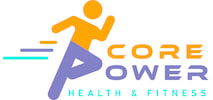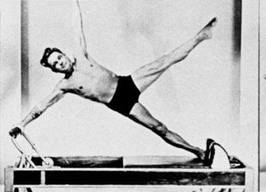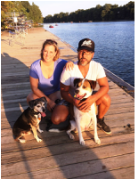STRETCH & REST CARE for the wellness warrior |
|
I’ll admit it. I’m a Pilates snob. I’m picky about my instructors, the equipment I use, and the studio I go to.
It all traces back to how I started my Pilates journey in the bottom of an old Houston Firehouse at a time when you couldn’t use the word Pilates. It wasn’t fancy but everyone in the studio was focused and dedicated to their workouts on these archaic looking machines. It was just before the trademark dispute settled in 2000. Studios all over the country were teaching Pilates but couldn’t call it that from 1992-2000 because of a lawsuit over the name. Once “Pilates” was freed up, it exploded. It was everywhere. You know what that means. Overtime, the exercises start to get watered down or adapted. The Pilates Method wasn’t immune to this phenomenon. With the craze of group fitness classes, it’s easy to miss out on the full benefits of Pilates if you didn’t learn it through private lessons in a fully equipped studio with an experienced instructor. Done right, you’ll walk out of your Pilates session a different person than going in. You’ll feel taller, calmer, centered... EMPOWERED. Pilates is an art form like martial arts or dance so knowing the history and purpose behind the exercises will help you experience the full benefits of it. Just like dance, the more you practice Pilates, the more you perfect it. The first step is learning the movement pattern for each exercise then you progress to focusing on your form from head to toe while executing each exercise. The goal is to eventually become your own coach. You can’t do that without having a good instructor to help you learn how each exercise should feel on your body. "Pilates is designed to give you suppleness, natural grace & skill that will unmistakably be reflected in the way you walk, in the way you play, and in the way you work" - Joseph Pilates PILATES 101
Pilates is defined as a movement system that uses spring-driven machines as well as a series of floor exercises to increase strength, flexibility, stamina and concentration. Joseph H. Pilates was the German inventor of the Pilates exercise method that he originally called “Contrology.”
Joseph Pilates was a sickly child and he believed exercise could heal and keep us healthy. He created his exercise method by combining the mental focus and breath of Yoga with physicality of gymnastics and other sports as growing up he was a diver, skier, boxer and gymnast. He perfected his method and designed his equipment working with injured German soldiers and eventually the NYC ballet. His wife Clara continued his training method at their NYC studio after he died in 1967. “Be in control of your body and not at its mercy”- Joseph Pilates BENEFITS OF PILATES
We all have muscle imbalances from being right or left handed, swinging a tennis racket, carrying a baby on one hip, or holding the phone to one ear that effect our posture, strength, flexibility and make us prone to injury as we age.
Pilate’s exercises are full body movements designed to improve posture, build a strong core, and improve balance and coordination without stressing our joints. The more balanced your body, the more efficient your movement can be. Pilates is not only a fun way to exercise but it can change your body overtime and can be adapted for injuries or sports training. It will improve your performance for fitness, sports or life. How is this possible? Most people think of Pilates as just a good core workout but it’s more complicated than that. Pilates is mindful movement and each exercise involves 6 key principles: breath, concentration, control, centering, precision and flow. PILATES PRINCIPLES
1. Breath- you never want to hold your breath during Pilate’s exercises. Keep it flowing. Typically you inhale to prepare and exhale during the movement.
2. Concentration- As you master the exercises, you’ll become better at performing a mental checklist head to toe for your form noting what is correct and incorrect and fixing it as you move. A Pilates instructor’s cueing is critical when you’re first learning to help you become more aware of the feel for the correct positions and movements. 3. Control- you’re learning how to control your body with your mind which trains you for life or sports and decreases your risk for injury. 4. Centering- in Pilates, all movements flow from a strong center. Basically, you turn on your core first and then move arms and legs with each exercise. This is probably the easiest principle for people to grasp but takes a lot of mental power to do it properly during the entire exercise or workout. You’ll hear the cue “scoop your belly” (or something similar) in your Pilates class but do you really know what you are supposed to feel or do? Let’s break this down since it’s so important. Your core involves a complex series of muscles from arm pits to hips and helps keep the spine aligned during movement. In Pilates, you’re targeting the stabilizer muscles of your core- Pelvic Floor, Transverse Abdominus, hip rotators, and low back (Multifidus). The Transverse Abdominus muscles, your deepest abdominals, run across your lower abdomen from hip to hip and coordinates closely with your pelvic floor muscles. During each Pilates exercise, you want to turn on your core by focusing first on contracting your pelvic floor muscles or doing the Kegel exercise. It’s an up, back and in motion. The Kegel should help the rest of your core muscles fire properly. If I’ve lost you, refer to my blog post on how to do a Kegel. It’s key to building a strong foundation with Pilates exercises. 5. Precision- you’re focusing on perfecting each movement by being precise in your focus and form. 6. Flow- you concentrate on moving with ease and grace during each individual exercise as well as connecting each exercise together like a dance to improve balance and coordination. You avoid jerky motions, holding a position or stopping between exercises. Just like your breath should keep flowing so should your movement. In order to master these 6 Pilates Principles and transform your body, you’ll need to find a good Pilates studio. I’ll share my tips for that in my next blog post. Subscribe so you don’t miss out on my “Finding your Pilates Studio Checklist” then go practice your Kegel! Mollie
1 Comment
|
Mollie Miller, PT
|
TERMS OF USE PRIVACY POLICY
Core Power Health & Fitness, Inc. does not provide medical advice. Consult a licensed physician prior to beginning any exercise or nutrition program.
Copyright © 2015 Core Power Health & Fitness Inc.
Core Power Health & Fitness, Inc. does not provide medical advice. Consult a licensed physician prior to beginning any exercise or nutrition program.
Copyright © 2015 Core Power Health & Fitness Inc.



 RSS Feed
RSS Feed